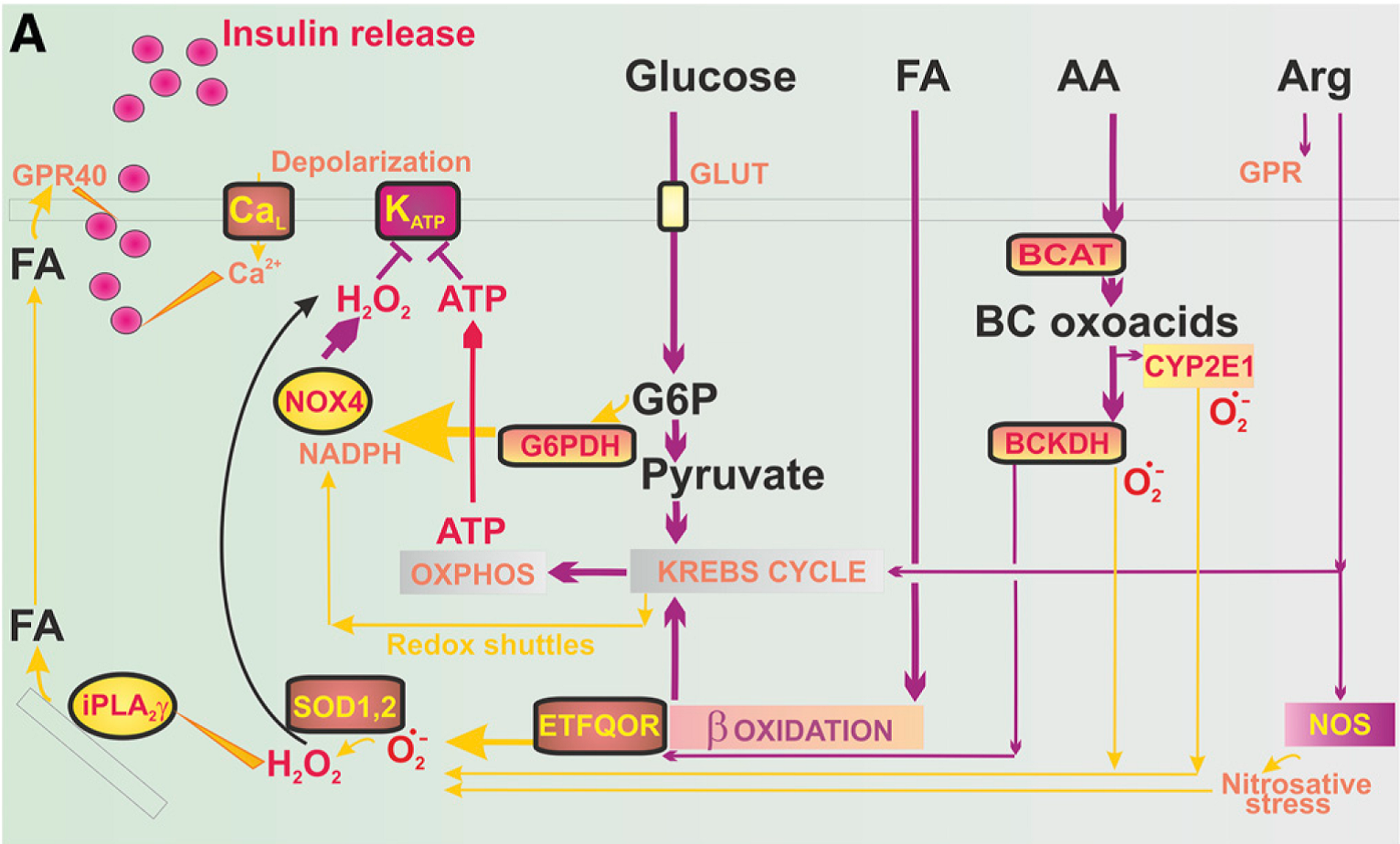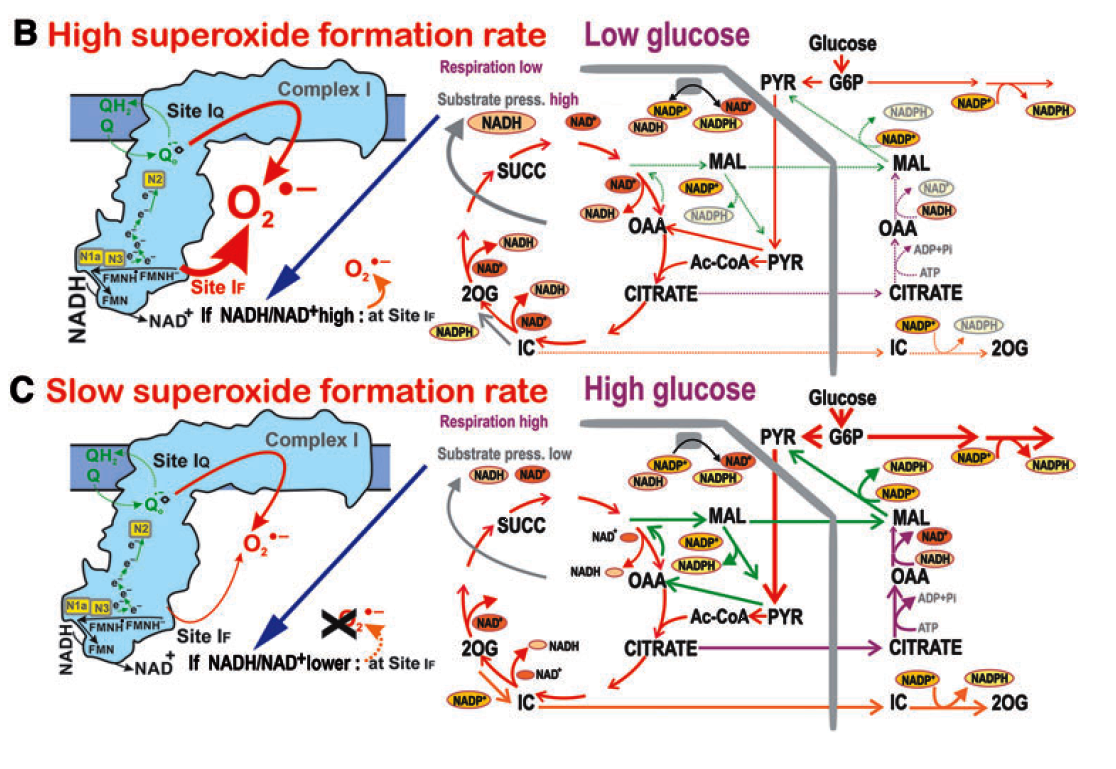Novel mechanism of insulin secretion highlights the importance of redox signalization
Insulin secretion by β cells of pancreatic islets is essential for the maintenance of body glucose homeostasis. Its disturbance leads to the development of diabetes. Till now the mechanism of secretion has been linked exclusively to increased concentration of cellular energy molecule ATP initiating the cascade of insulin secretion. Our results showed that besides ATP the insulin secretion requires redox signalization. Specifically, we point out NADPH oxidase, isoform 4, which activity increases upon glucose induction. This leads to transient increase of pro-oxidative molecule, hydrogen peroxide, which together with ATP facilitate insulin secretion. Our results emphasize the essential role of redox signalization in the physiology of β cell.
Plecitá-Hlavatá L, Jabůrek M, Holendová B, Tauber J, Pavluch V, Berková Z, Cahová M, Schröder K, Brandes R.P, Siemen D, Ježek P Glucose-Stimulated Insulin Secretion Fundamentally Requires H(2)O(2)Signaling by NADPH Oxidase 4 . Diabetes. 2020; 69(7); 1341-1354,IF: 7.720
Detailed characterization of redox status in β cells contributes to the understanding of insulin secretion mechanism
We described the significance of redox signalization in insulin secretion process as the response to an increased level of body glucose in the publication above. The essential enzyme participating in this mechanism is cytosolic NADPH oxidase. It is known, that mitochondria produce superoxide and other reactive oxygen species (ROS) besides energy molecule ATP. Mitochondria derived ROS can potentially be involved in overall cellular redox state in β cell and thus can impact insulin secretion. We have shown in this paper that glucose induction unexpectedly reduces superoxide production in mitochondria and we attempted to describe the molecular mechanism of such decrease. For this study, we used novel probes and method of fluorescent microscopy enabling to follow redox status changes in real-time and in various cellular compartments.


(A) Novel molecular mechanism of insulin secretion emphasizing the role of redox signalization in β cells induced by various substrates (glucose, fatty acids (FA), amino acids (AA), Arginin (Arg)).
(B, C) Overview of major metabolic and redox fluxes in β cell under low, non-stimulating, glucose levels (B, causing no insulin secretion) and under high glucose levels inducing insulin secretion (C).
Plecitá-Hlavatá L, Engstová H, Holendová B, Tauber J, Špaček T, Petrásková L, Křen V, Špačková J, Gotvaldová K,Ježek J, Dlasková A, Smolková K, Ježek P Mitochondrial Superoxide Production Decreases on Glucose-Stimulated Insulin Secretion in Pancreatic beta Cells Due to Decreasing Mitochondrial Matrix NADH/NAD(+) Ratio . Antioxidants & Redox Signaling. 2020; 33(12); 789-815 . IF: 6.323 DOI
